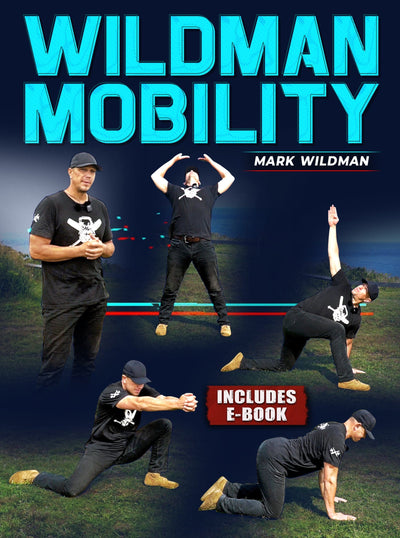Kettlebell Swings
Kettlebell swings are a dynamic and powerful exercise that has gained significant popularity in the realm of fitness and strength training. Originating from Russia, kettlebell swings offer a unique blend of cardiovascular conditioning, muscular endurance, and explosive power development. This exercise involves swinging a kettlebell, which is a cast-iron ball with a handle, between the legs and up to chest level or higher. The fluid and controlled movement engages multiple muscle groups, making it a highly efficient and effective workout.
What this article covers:
- What Kettlebell Swings Work
- Benefits of Kettlebell Swings
- Kettlebell Swing Form
- How to Do Kettlebell Swings
- Alternative to Kettlebell Swings
One of the key benefits of kettlebell swings is their ability to target the posterior chain muscles, which include the glutes, hamstrings, and lower back. As the hips drive the motion, these muscles are engaged in a coordinated effort, leading to improved strength and stability. Additionally, the core muscles play a vital role in stabilizing the spine throughout the movement, contributing to enhanced core strength and overall balance.
Kettlebell swings can be tailored to various fitness levels and goals. For beginners, mastering the proper technique is crucial to prevent injury. The movement involves hinging at the hips, maintaining a flat back, and using the momentum generated by the hips to swing the kettlebell. As proficiency improves, individuals can gradually increase the weight of the kettlebell or the intensity of the swings to continuously challenge their muscles and cardiovascular system.
Incorporating kettlebell swings into a regular workout routine can have a positive impact on both strength and cardiovascular fitness. The explosive nature of the exercise not only builds muscular power but also elevates heart rate, contributing to improved cardiovascular endurance. This dual benefit makes kettlebell swings a time-efficient option for those looking to maximize their workout results in a shorter amount of time.
It's important to note that proper form is paramount when performing kettlebell swings. Incorrect technique can lead to strain or injury, particularly to the lower back. Therefore, seeking guidance from a certified fitness professional or trainer is advisable, especially for beginners. Learning the nuances of the movement under expert supervision ensures that you reap the full benefits of kettlebell swings while minimizing the risk of harm.
What Kettlebell Swings Work
So what do Kettlebell swings work? They are a compound exercise that engages a wide range of muscles throughout the body. They primarily target the posterior chain, which includes the glutes, hamstrings, and lower back. These muscles are essential for activities like running, jumping, and lifting. The explosive hip thrust at the top of the swing also activates the core muscles, specifically the rectus abdominis and obliques, contributing to improved core strength and stability. Additionally, the shoulders, lats, and forearms play a role in controlling the movement and stabilizing the kettlebell.
Benefits of Kettlebell Swings
The benefits of kettlebell swings are multifaceted. Firstly, they offer an efficient cardiovascular workout due to the explosive nature of the movement, elevating heart rate and promoting cardiovascular endurance. Secondly, they build muscular endurance and explosive power, making them valuable for athletes and fitness enthusiasts. Furthermore, kettlebell swings enhance functional strength, as they mimic real-world movements and improve overall athleticism. Additionally, the exercise can aid in fat loss by burning a significant amount of calories in a short period. Moreover, kettlebell swings improve posture by strengthening the muscles that support the spine. Lastly, they can be adapted for different fitness levels, allowing beginners to learn the basics and advanced individuals to challenge themselves with heavier weights.
Kettlebell Swing Form
Proper kettlebell swing form is crucial to reap the benefits of kettlebell swings while minimizing the risk of injury. To perform the exercise correctly, start with your feet shoulder-width apart and the kettlebell a foot in front of you. Hinge at your hips while maintaining a neutral spine and grip the kettlebell handle with both hands. Initiate the swing by forcefully thrusting your hips forward, swinging the kettlebell between your legs. As the kettlebell reaches its peak between your thighs, stand up straight and snap your hips forward to generate momentum. Allow the kettlebell to swing up to chest level or slightly above, keeping your arms extended. Control the descent and repeat the movement.
How to Do Kettlebell Swings
Stand with your feet shoulder-width apart and the kettlebell a foot in front of you. Hinge at your hips, maintaining a flat back, and grip the kettlebell handle with both hands. Initiate the swing by forcefully thrusting your hips forward, swinging the kettlebell between your legs.
As the kettlebell reaches its peak between your thighs, stand up straight and snap your hips forward to swing the kettlebell upward. Allow the kettlebell to swing up to chest level or slightly above while keeping your arms extended. Control the descent by hinging at your hips again and repeat the movement for the desired number of repetitions. And this is how to do kettlebell swings!
Alternative to Kettlebell Swings
If kettlebell swings are not suitable for you due to physical limitations or preferences, there are alternatives to kettlebell swings that offer similar benefits. One alternative is the dumbbell swing, where you hold a dumbbell with both hands and perform a similar hip thrusting motion. Another option is the Romanian deadlift, which targets the hamstrings and lower back without the dynamic swinging motion. Additionally, hip thrusts with a barbell or resistance band can be effective for strengthening the glutes. Always consult a fitness professional to determine the best alternatives based on your individual needs and goals.
In conclusion, kettlebell swings offer a dynamic and versatile exercise option for individuals seeking a full-body workout that targets multiple muscle groups while also providing cardiovascular benefits. This movement can be a valuable addition to a well-rounded fitness routine, aiding in developing strength, power, endurance, and stability. Whether you're a seasoned athlete or new to fitness, incorporating kettlebell swings with proper technique can contribute to achieving your fitness goals effectively and efficiently.
Did you find the blog helpful? If so, consider checking out other guides:
- 100 Kettlebell Swings a Day
- Kettlebell Swings with a Dumbbell
- 10,000 Kettlebell Swing Challenge
- How Many Kettlebell Swings
- 300 Kettlebell Swings a Day
- 50 Kettlebell Swings a Day
- 200 Kettlebell Swings a Day
- Kettlebell Jump Squats
- Hack Squat Kettlebell
- Kettlebell Squat Variations
- The Kettlebell Rack Squat
- Kettlebell Squat to Press
- Kettlebell Clean Squat Press
- Kettlebell High Pull
- Kettlebell Pullover





